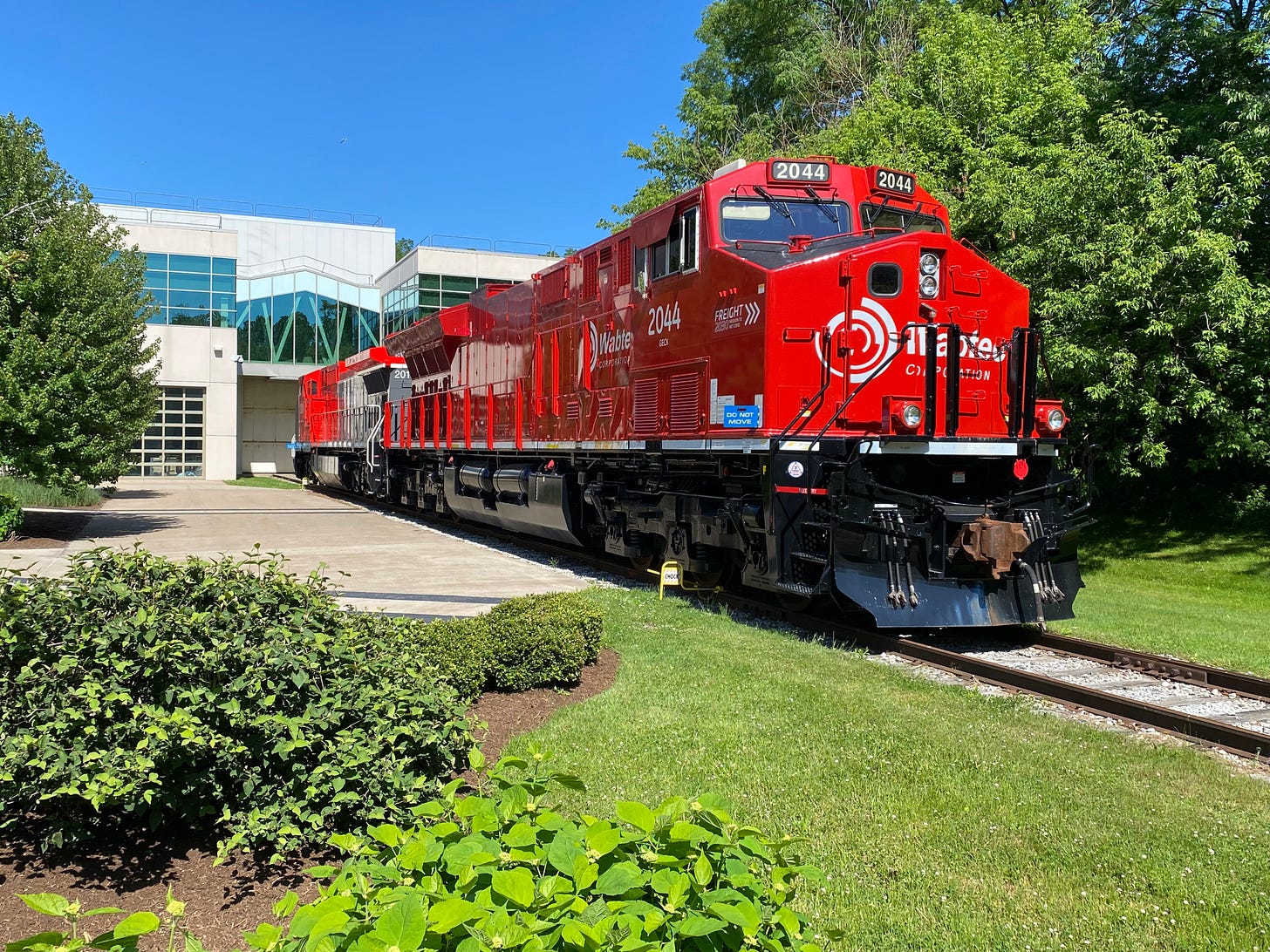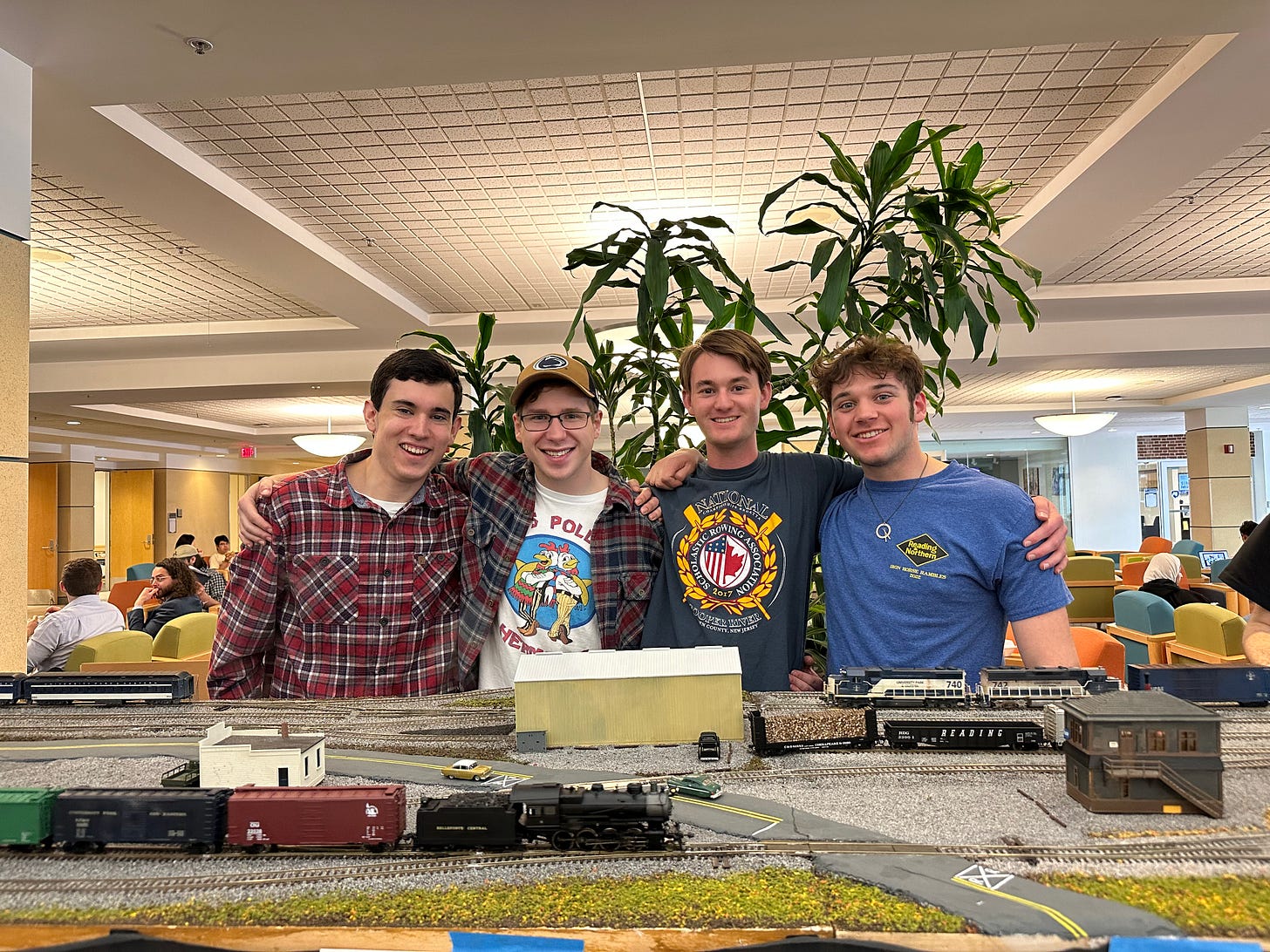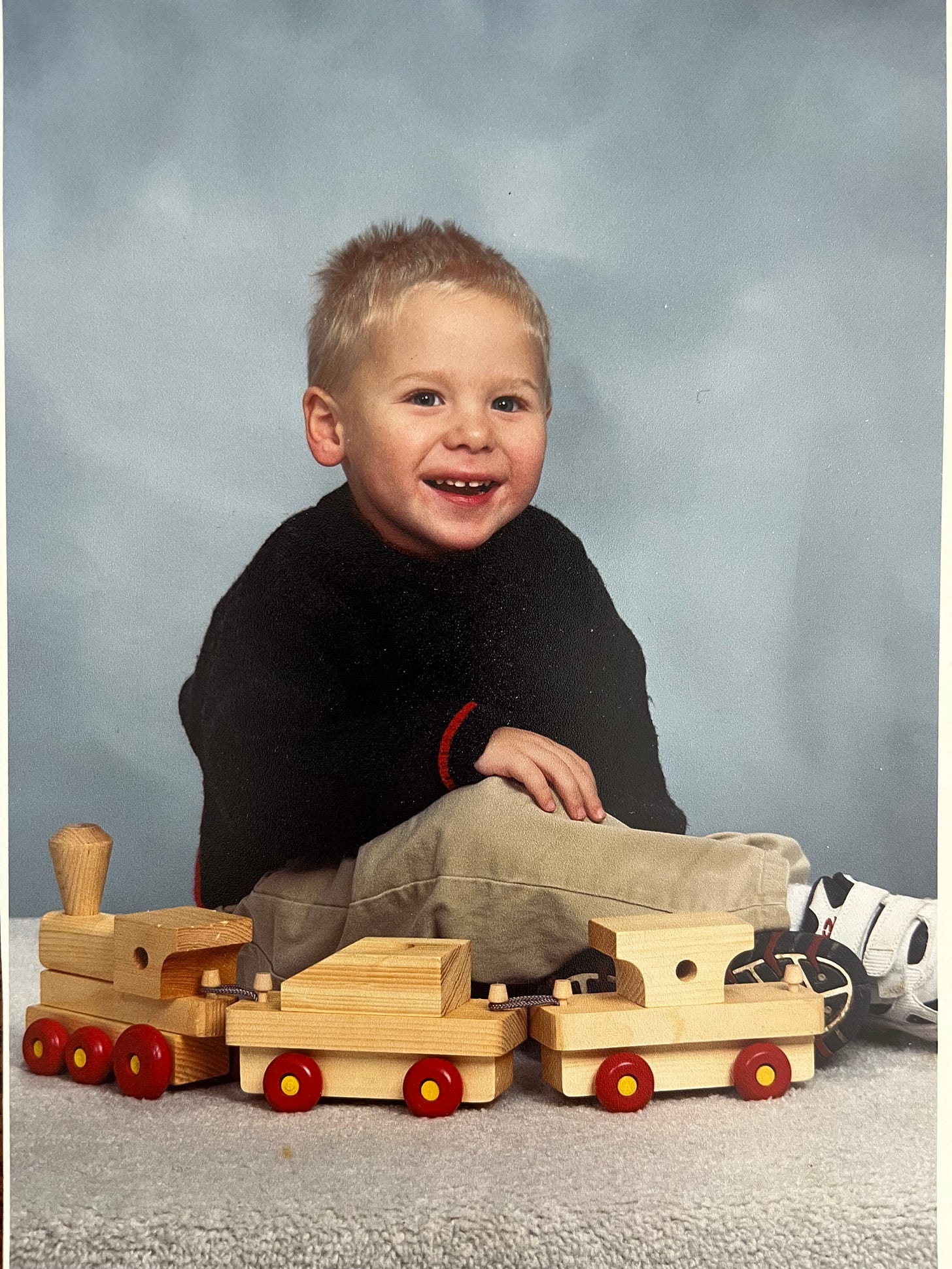Chris Coholich - Decoder, Railroader
Behind the Throttle: Edition 2, Installment 3
“The railroads have always been innovators, finding new ways to solves problems…”
My personal journey through the world of trains has led me to cross paths with so many likeminded and enthusiastic individuals my age and below, who have the ability to make sense of numbers and equations that are otherwise gibberish to me. Many of those wonderful people I become lucky enough to call my friends, and I’m proud to have one such example on the blog today. This spotlight takes the crown for Behind the Throttle’s youngest feature - born just in 2003 - and with a bright and complicated future ahead. Today we meet Chris Coholich - Decoder, Railroader.
Chris’s first memory with trains - rather, his first memory altogether that he can recall - goes back to him playing with the classic “Brio” wooden trains that so many of us can fondly remember. Though, Chris’s specific memory paints him having a meltdown as his young brain was unable to put together the wooden tracks. Sitting on the floor of his playroom, surrounded by toy trains, this puzzle had stumped Chris and brought tears of frustration to his eyes - perhaps invigorating a desire to solves challenges and puzzles that would manifest in later years. His three siblings and his parents all did not share the budding interest in trains that was becoming more persistent in Chris’s life, but as he memorized the schedule of when the shortline railroad nearby their home and begged to go out and watch the train go by, they all began to realize this fascination wasn’t going anywhere. Growing up in Pittsburgh, Pennsylvania, there certainly was no shortage of trains to leer at, and happenstance occurrences brought him trackside often. His extended family also caught on, and fed his new passion with gifting books and model trains that he would dive into, attempting to make sense of this wide world of railroading that grew each time he learned more. On a Boy Scouts trip when he was 12 years old, Chris and his troop visited the world-famous Horseshoe Curve in Altoona, Pennsylvania - a fantastic demonstration of engineering and horsepower. This trip helped cement the fascination, and Chris returned home itching to see more. The plentiful bike trails that paralleled train tracks became the regular stomping grounds for family rides, and his extended family continued to egg him on and encourage him to immerse.
Growing up in the age of computers, Chris soon found himself with more questions about trains than the internet could answer. His inquisitive side brought him to wonder “why are there railroad tracks here” and “where do the trains go?”. Hungry for answers, Chris took to the first method of finding out where the tracks went that he could think of: following the train tracks on Google Maps - naturally. This surface-level research was beginning of a deep-dive into railroad history that blew the world of trains that Chris had known into a new dimension. Largely on his own, Chris sought out knowledge on the dense history of railroading that built city, state, and country he called home. With each spur track that he followed on a satellite map, his brain began to move faster and faster, trying to keep up with the wealth of knowledge he found about the millions of miles of steel rails that criss-crossed every stretch of the world that he knew. Then came social media, where he found himself in group-chats with other people as crazy about trains as himself. With a backing community that helped fill the gaps in his knowledge and gave him tools to learn more, Chris found himself on the mainline to a lifelong fixation that would dictate his future trajectory.
Chris’s fascination with history wasn’t his own means of being interested in trains though. Throughout his time in high school, Chris began to gravitate to field of science, technology, engineering, and math, taking from his long-standing enjoyment from solving puzzles. Past that first puzzle of how to fit wooden train tracks together, Chris placed himself in above-level engineering courses in high school and began searching for a university that could further his understanding. His father and many other family members all had success at the Pennsylvania State University, and he needed little persuasion to follow their footsteps, especially after learning that the university boasts a model railroad club.
Chris’s studies landed him an internship at the engineering and railroad giant Westinghouse Air Brake Technologies Corporation, or Wabtec, after his sophomore year. He recounted with a laugh the story of getting the internship, which involved a frantic bike ride to a Kohl’s about four miles from campus after he discovered he possessed not a single collared T-shirt before the career fair where he would meet the recruiter, and the following day making the same trip on his bike to acquire another collared shirt so he wouldn’t be wearing the same outfit in his subsequent interview. His ambition and knowledge - along with a both of his shirts - made a lasting impression with the company and he took on his first internship in Grove City, Pennsylvania, where Wabtec assembles prime movers and engine blocks for the large locomotives that are the backbone of railroads worldwide. Having studies the mechanics of a diesel-electric locomotive in the past, Chris knew largely how the systems worked already, but seeing them actually be assembled and tested proved to be a new element in his fascination. Though his primary function in the internship was quality-checking the machining and drilling of the holes in engine blocks, he had the chance to go out and see the whole process and learn more about what it takes to build a locomotive from the ground up. With no hesitation, Chris opted for a second internship in the summer of 2024, where he spent time in the main locomotive facility in Erie, Pennsylvania where locomotives have been built for over 100 years under General Electrics. Particularly fascinated with early GE locomotives, this opportunity was most exciting for Chris, and he found himself working with a brand new realm of locomotive upon arrival. Battery technology is now making it’s way to the railroads, and Chris’s main project was working with a prototype battery locomotive destined for Australia. “The railroads have always been innovators, finding new ways to solves problems”, Chris explained. Chris recognizes battery technology has a long way to go and isn’t an end-all solution for the future of locomotives, though he found it valuable to be alongside a new chapter of innovation and design in the industry he hopes to make a difference in.

Less than three weeks beyond this article’s publication, Chris will walk the stage at his commencement ceremony and gradate from Penn State. He leaves beyond a club that became a cornerstone of his college experience - the aforementioned Penn State Model Railroad Club. Chris had always had an interest in model trains since he graduated from the wooden trains and later Legos, but lacked the time, space, and money that model railroading tends to guzzle. The university club alleviated the need of the money and space, and he found the time to invest. Serving as Vice President his junior year and President his senior year, Chris found that the hobby is more than just appreciating the machines in model form, but rather is a way to further investigate history, purpose, and electronics, all while building something beautiful. Further, he found a wonderful community that allowed him to work on his leadership skills, public speaking and presenting, and have a space and medium to not fear failure in pursuits of new methods. “It’s always fun when you have someone to share the hobby with”, he told me. Plus (speaking as the club president before Chris), the club is a lot of fun. The model railroad club built a large modular display and hosted events all throughout the school year, inviting other students and community members to see their creations and get excited about trains, a rather worthy endeavor in Chris’s (and my own) opinion. The club that Chris leave behind looks rather different than it did when he first started at Penn State, with a new home and new projects, and a new future: “I want to come back in 5 years and see the club still around”.

Chris’s journey through being a train enthusiast to technology engineer has been defined by a handful of keystone moments. He can recall an outing with a friend from primary school, where both his friend and his friend’s father were railfans and realized that liking trains was a real phenomenon that could grow beyond just a casual interest. He then thought to receiving the letter of acceptance to the internship program that would line the track for his eventual career, with taking a trip on the Erie plant test track being a highlight from the whole experience. Riding in locomotives that he had spent the last few months working to understand, he was given a chance to see all of the systems - both the technology and the prime movers - in action as the colorful consist of locomotives made its way down the test line. He also recalls many moments of pride with the Penn State Model Railroad Club, where young visitors got to see the exciting of trains thanks to him and his team’s creations, and hopefully helped spur lifelong passions just the same as his.
With two internships under his belt, and degree he fought hard for, and experience as a leader and problem solver, Chris feels well-equipped and ready for his next adventure: “It’s a new frontier”, he feels. Leaving Wabtec’s intern program, Chris accepted their offer to come back for a real job upon his graduation. His railroad engineering career will first take him to Kansas in a BNSF shop where he’ll work alongside the railroad technicians to understand how the engines behave on the road and how their managed and repaired, before he rotates back to headquarters to continue in their development. Citing one of his favorite railroads, “The Pennsylvania Railroad was always a chief innovator”, Chris is excited to continue in the railroad way of innovation and progress, but is also mindful of the need for operation excellence and efficiency. He hopes to work for a future of reliable machines that the men and women of the railroads can safely operate and contribute to a healthy global commerce network, and still enjoy the magic of trains that took him by storm at a young age. And who knows, maybe one day the’ll finally be able to put those wooden tracks together!
Thank you for reading this edition of Behind the Throttle, and thanks to Chris for sharing his story with us! Tune in Monday April 28th for our next edition, featuring Josh Cascarella reflecting on his career with the Reading and Northern railroad in Pennsylvania. Until then, I’m Max Harris, and I’ll see you down the line.





